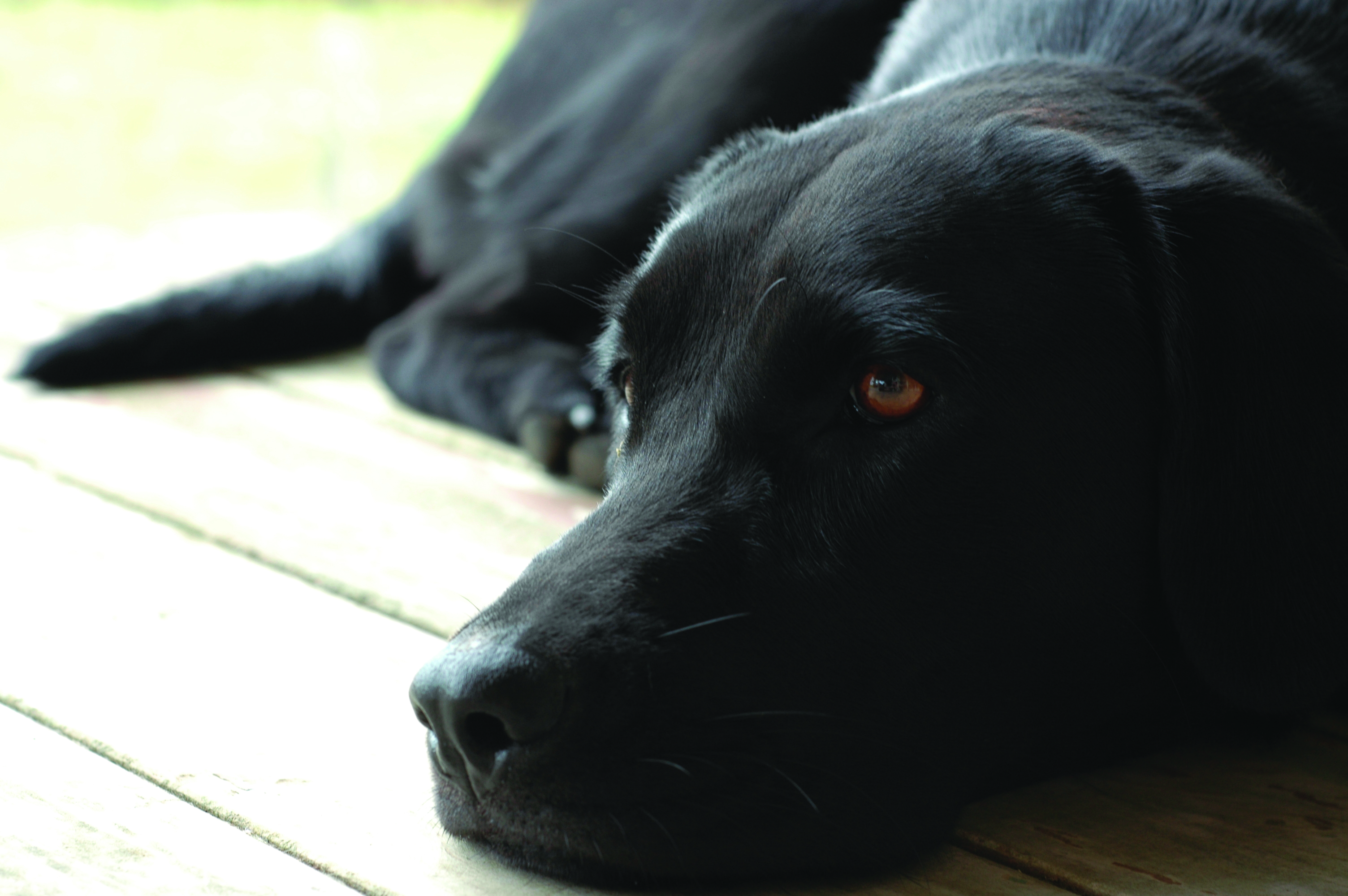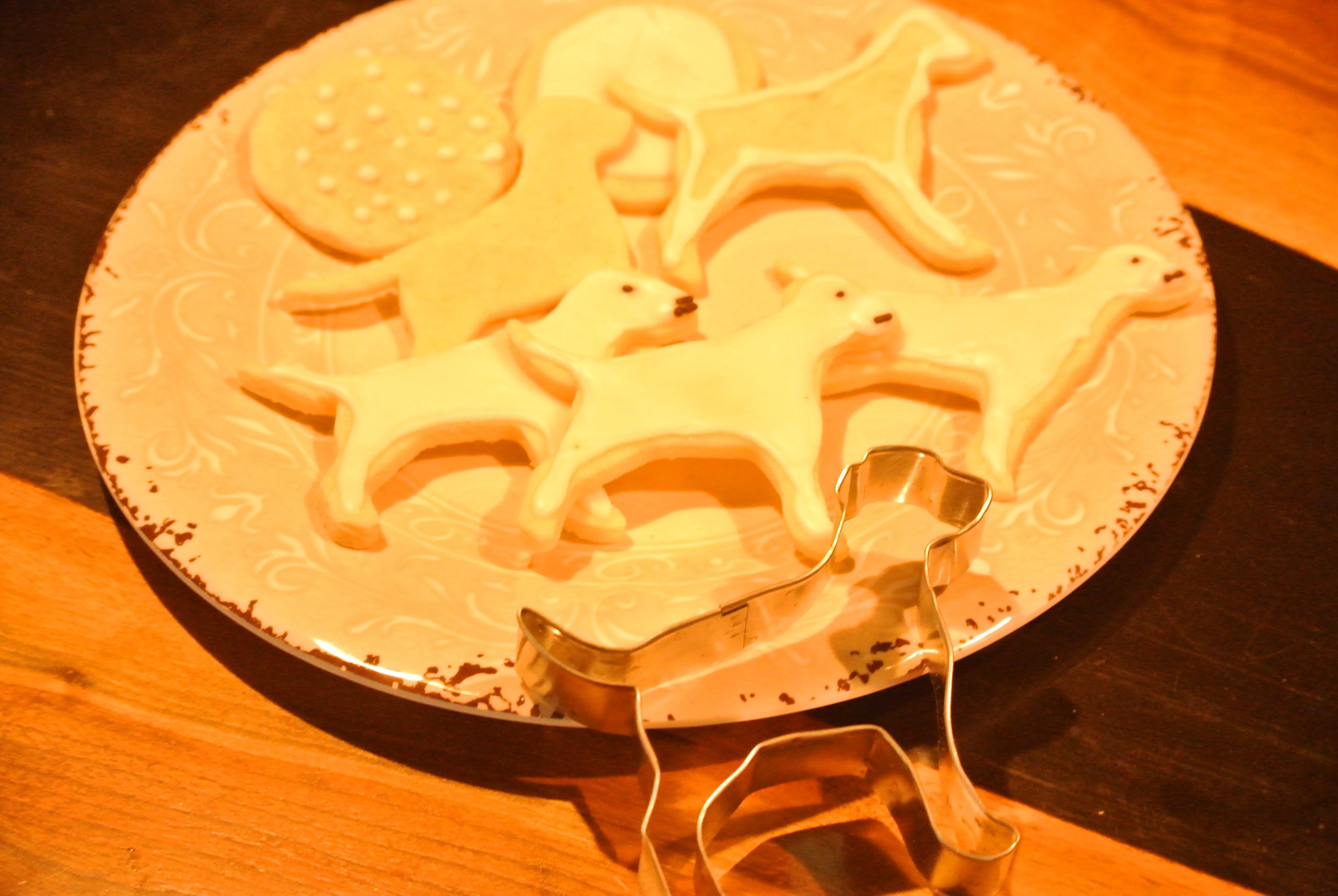It’s well-understood that pets help lift spirits, reduce stress, and offset depression. After all, your Lab’s naturally charismatic and energetic personality makes it difficult to be anything but happy.
But, what if he isn’t?
Maybe you’ve noticed your Lab is not quite himself in the winter; at least he doesn’t show the same behaviors as on sunny summer days. Maybe he seems more lethargic, hungrier, and less peppy than usual. Does your Lab have the winter blues?
It’s not a diagnosable condition, as is it with humans. However, owners do observe their dogs seemingly changing their behavior with seasonal changes. Sunlight is a big reason. When we – and our dogs – are around sunlight, our bodies better regulate the production of melatonin, which is released when it’s dark. Take away the sunlight and you increase the amount of melatonin, thus affecting your sleep cycle, energy, and mood. Serotonin, the feel good hormone, production depends on sunlight as well. Take away the sunlight and you have less serotonin, so you feel more “blah” than happy.
Another big influencer in our dog’s behavior is us. Our moods affect their moods and therefore can affect their outward behavior to mirror our own. It could also be that they’re bored. Since it’s cold outside, we are spending less time outside, which means they are probably spending less time outside, too.
How do you add a little lift to your winter? Here are a few things you can do.
1. Get outside. Bundle up. Don’t let that daily walk go on hiatus until spring. Even if it’s just for 15 minutes, the change in environment and being more in the open air can do wonders to lift a mood. If it’s sunny, all the better. Get as large a dose as you can! Obviously, if it’s too cold, find an indoor activity to engage your Lab.
2. Do an indoor activity. Winter is the perfect time to polish up on basic commands and even practice on-leash training. Introduce a new interactive toy or teach your Lab a new game, such as hide-and-seek, to keep bodies and minds busy – and to further strengthen your relationship as you’ll be working together.
3. Lift the shades. Draw back the curtains. Move your Lab’s bed so that it’s near a “sunbathing spot.” Increasing natural sunlight increases the amount of light entering our eyes, which positively affects brain chemistry. The same goes for our dogs. If you’re at work all day, don’t leave the windows covered to keep out whatever sunlight we get. Plus, a window gives your Lab something to do – watch the yard for animals, the postman, etc.
4. Eat a balanced diet. Don’t give in to your Lab’s insatiable appetite. He’s probably bored or wants to eat “comfort food” – sound familiar? This is due to the reduction in serotonin; we try to compromise by eating “feel good” foods to make up for the lack of serotonin production from lack of sunlight. Just like us, dogs need to maintain a healthy diet and weight and avoid from falling into these traps too often. Check your dog’s food to make sure it’s full of essential fatty acids, like omega-3. If you notice your Lab seems to have a loss of appetite, spice things up by adding low-sodium broth, boneless chicken, or hamburger for a few days. Once he’s back eating like normal, cut back.
5. Cuddle. It’s all about biochemistry, thanks to the release of oxytocin! Petting a dog has shown to reduce feelings of stress and anxiety, ward off depression, and boost the immune system. For your dog, touch reduces their stress and releases a burst of the bonding hormone. Being together is mutually beneficial for both of your moods.






